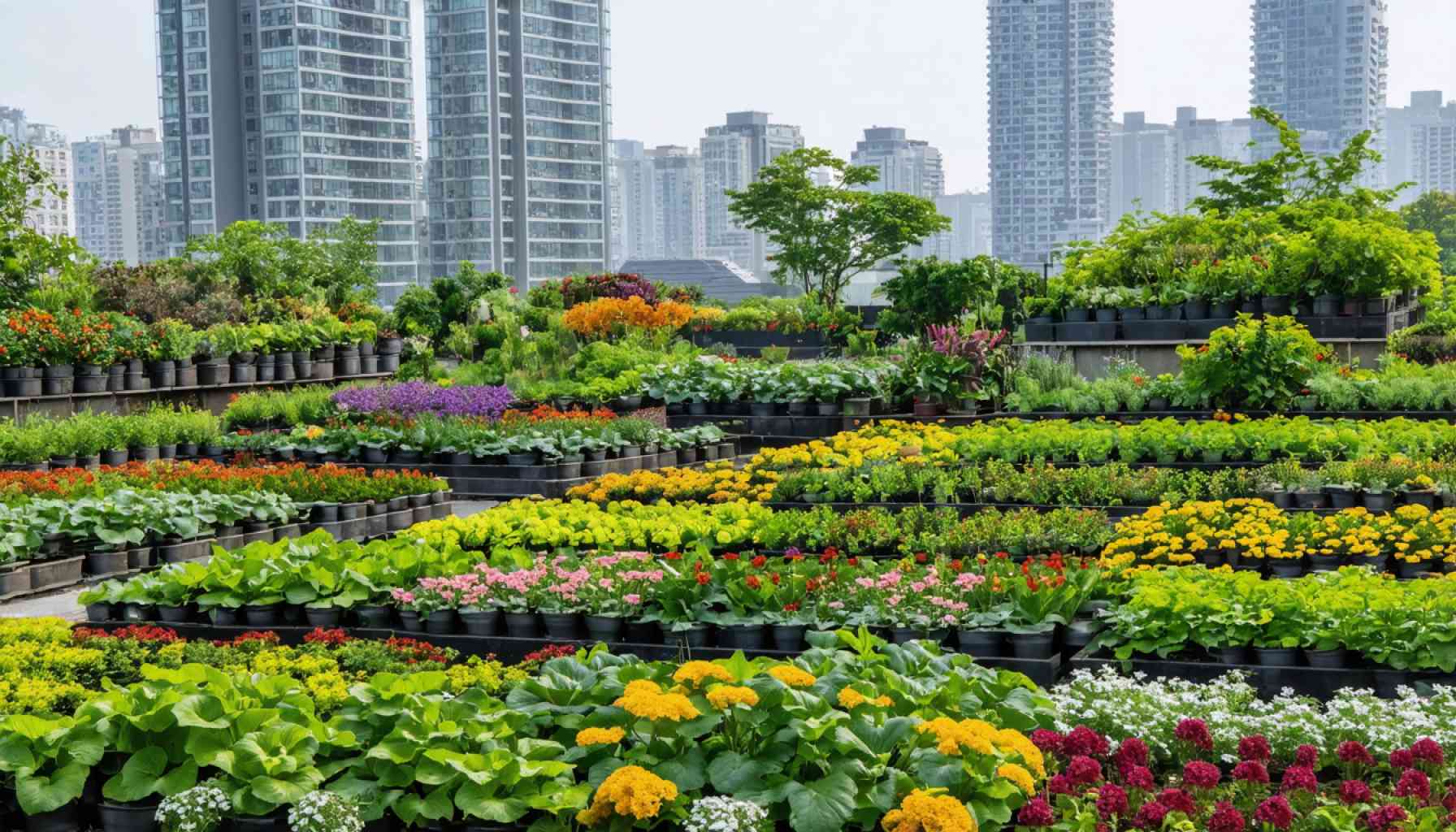- Urban gardens transform barren urban spaces into thriving ecosystems, bringing sustainability and beauty to cities.
- These gardens enhance biodiversity by providing habitats for pollinators and wildlife, mitigating the urban heat island effect.
- Community-focused, urban gardens strengthen social connections and foster a sense of ownership and cooperation among residents.
- Urban gardening improves air and water quality, absorbing pollutants and managing urban runoff to reduce flooding risks.
- They provide educational opportunities, serving as living classrooms that inspire sustainable practices and environmental stewardship.
- Supporting urban gardening initiatives is essential for promoting sustainability and community well-being in city environments.
Imagine a barren rooftop or a derelict alleyway blooming with life, where fresh herbs, vibrant flowers, and ripe vegetables thrive amidst the urban sprawl. This transformation isn’t the work of magic—it’s the power of urban gardens bringing sustainability to life in unexpected places.
Asphalt jungles unite with nature in these innovative spaces, providing more than just greenery to concrete cities. Urban gardens offer a refuge for biodiversity, attract pollinators critical for ecosystems, and reduce the heat island effect common in city environments. It’s a practice that not only beautifies surroundings but creates pockets of wildlife habitats essential for birds and insects navigating urban mazes.
Community roots deepen as residents from diverse backgrounds converge to cultivate these spaces. Beyond physical nourishment, urban gardens nourish social connections by fostering community spirit and cooperation. Neighborhoods grow stronger when individuals come together to plant, tend, and harvest, sharing both knowledge and produce. These communal acts nurture a sense of ownership and collective responsibility, which strengthens community bonds.
The environmental ripple effect of urban gardening extends to air and water quality improvements. Plants purify the air by absorbing pollutants while their roots help manage urban runoff, reducing the risk of flooding. By incorporating native species, urban gardens enhance resilience against climate change and bolster local ecology.
Educational opportunities abound for children and adults alike. Urban gardens serve as living classrooms where learners of all ages can witness the lifecycle of plants, grasp the principles of ecology, and experience the patience and gratification of growing food. This hands-on education fosters environmental stewardship and inspires sustainable living practices across generations.
A clear takeaway message stands: Urban gardens are more than verdant oases—they are crucial ecosystems that promote sustainability and community well-being. They demonstrate how thoughtful actions within city limits can significantly impact the health of our planet and its inhabitants.
To cultivate a future that balances urban development with nature’s gifts, we must support and expand urban gardening initiatives. Embrace the seed of change—plant an urban garden and watch sustainability grow in the heart of your city.
Transform Your Cityscape: Unlocking the Full Potential of Urban Gardens
Exploring the Dimensions of Urban Gardens
Urban gardening is an innovative solution to many modern challenges, but there’s more to it than meets the eye. Let’s dive deeper into the myriad benefits and untapped potential these green spaces offer, while also addressing common questions and issues associated with urban gardening.
How-To Steps & Life Hacks for Starting an Urban Garden
1. Assess Your Space: Evaluate accessible areas such as rooftops, balconies, or community spaces. Consider sunlight, wind exposure, and access to water.
2. Choose the Right Plants: Opt for native and drought-tolerant plants that thrive in your city’s climate. Herbs, edible greens like spinach and kale, and flowering plants are excellent starters.
3. Soil and Compost: Use quality potting mix and enrich it with compost. This not only enhances plant growth but also ensures sustainable waste management.
4. Plan for Maintenance: Establish a watering schedule and plan for regular care. Consider using drip irrigation systems to conserve water.
5. Involve the Community: Engage neighbors and local organizations to share responsibilities and fruit. This builds stronger community ties and shared ownership.
Real-World Use Cases & Industry Trends
Urban gardens are sprouting in cities worldwide. In cities like New York and Singapore, these green projects transform rooftops into mini-ecosystems and contribute to local food production. As of 2023, urban farming is expected to grow by 7.3% annually, reflecting a growing recognition of its benefits (Source: Allied Market Research).
Reviews & Comparisons
– Traditional Gardens vs. Urban Gardens: Traditional gardens require more space and resources, whereas urban gardens maximize limited space and often encourage community involvement.
– Hydroponics vs. Soil Gardening: Hydroponic systems are highly efficient for urban environments, requiring less water and delivering faster plant growth, but they can involve higher setup costs.
Controversies & Limitations
– Space Constraints: While urban gardens are a clever use of limited space, they do face restrictions due to heavy urban development.
– Access to Resources: Water availability and contamination issues can pose challenges, necessitating careful choice of irrigation methods and soil.
Features, Specs & Pricing
Urban gardening initiatives can involve costs for materials such as plant beds, soils, seeds, and water systems. Community programs often subsidize these costs, making urban gardens a feasible option for budget-conscious cities.
Security & Sustainability
Urban gardens foster local food security by reducing reliance on imported goods and lowering carbon footprints. They also contribute to biodiversity and climate adaptation efforts.
Pros & Cons Overview
– Pros:
– Enhances biodiversity and urban ecology
– Reduces urban heat island effect
– Strengthens community bonds
– Provides educational opportunities
– Cons:
– Space limitations
– Resource access and management
– Potential community conflicts over space usage
Insights & Predictions
Urban gardens are expected to expand as cities prioritize sustainability and community wellness. As the climate crisis intensifies, such green initiatives will play a vital role in urban resilience strategies.
Actionable Recommendations
1. Get Involved: Join or start an urban gardening project in your neighborhood. Check local community boards or online platforms for initiatives.
2. Educate and Advocate: Share knowledge about urban gardens’ benefits and encourage policymakers to support green initiatives.
3. Utilize Technology: Implement smart watering systems and track plant health using apps to enhance efficiency and sustainability.
For more on sustainability, visit U.S. Environmental Protection Agency.
Urban gardens represent a powerful tool for transforming our cities and lives. By cultivating these spaces, you invest in a greener, more sustainable future for your community and the planet. Embrace the change today!






















